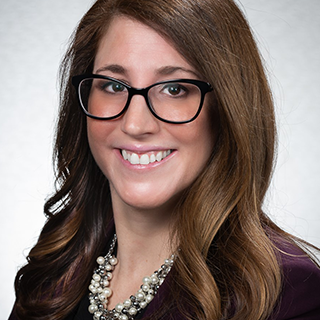Quick Links

Should South Jersey reopen before North Jersey? Gov. Murphy prefers uniform statewide strategy
Murphy has remained doggedly persistent with two principles for his reopening strategy: The first is that decisions on lifting social-distancing restrictions will be based on available scientific data and potential health impacts; “Data determines dates” has become one of his new favorite catchphrases. The second is that New Jersey will not take a piecemeal approach and will move forward as one state rather treating specific regions or counties differently.
TRENTON — It’s been two months since New Jersey essentially shut down due to the rapid spread of coronavirus, and the state is now taking its first steps toward reopening and a long-awaited return to normal business operations. State and county parks are already back open, and Gov. Phil Murphy has given the greenlight for New Jersey’s beaches and boardwalks to open for Memorial Day weekend, and for construction work to resume and retail stores to do curbside business.
But New Jersey, which has been rocked by COVID-19 like few other states, still has a ways to go before most businesses can open again, and Murphy continues to preach a slow, and careful approach to rebooting the state’s economy. “The road back is paved with five words: Public health creates economic health. We know for our economic restart to turn into a full-fledged recovery we need to give working New Jerseyans and business owners confidence that we are ready to move forward,” the governor said last week. “We need to give them confidence that we are prepared and we are moving responsibly and purposely.”
Murphy has remained doggedly persistent with two principles of his reopening strategy: The first is that decisions on lifting social-distancing restrictions will be based on available scientific data and potential health impacts. “Data determines dates” has become one of his new favorite catchphrases.
The second is that New Jersey will not take a piecemeal approach and will move forward as one state rather treating specific regions or counties differently.
In other words, businesses in South Jersey counties like Burlington, Camden, Gloucester and Cumberland, which have had comparatively fewer cases of coronavirus than those in North Jersey, will not be permitted to reopen before their northern counterparts.
“I personally am of the opinion that steps we take will continue to be statewide steps in terms of reopening,” Murphy said Tuesday during one of his daily press briefings.
The strategy differs from those being used by neighboring Pennsylvania and New York, whose Democratic governors are lifting restrictions by counties and regions. Murphy’s insistence on a statewide strategy has also generated some pushback from some lawmakers and business groups, who argue the administration should ditch its “one-size-fits-all” strategy and permit a more rapid relaunch in areas of the state that have been less severely impacted.
Advocating another path
The Southern New Jersey Chamber of Commerce is among the groups advocating for a regional strategy. Last week, the organization unveiled a reopening plan created by a working group of South Jersey business representatives and leaders that calls for dividing the state into North, Central, South and Shore regions and having staggered reopenings in each based on health conditions and at-risk industries.
“Without question, the health and safety of all New Jerseyans must remain the priority. However, the plan for the reopening of New Jersey cannot be a onesize- fits-all approach,” the working group wrote in the plan. “As the immediate crisis continues to slowly subside, specific South Jersey guidelines on how and what industries may reopen safely are needed. The virus has impacted each region of the state differently and the challenges to reopening differ greatly from the northern to the southern regions of the state.”
The plan suggests that the South Jersey region be defined as Burlington, Camden, Cumberland, Gloucester and Salem counties and be treated differently than the North, Central and Shore regions, which it defines as Atlantic, Cape May, Monmouth and Ocean. It says the South Jersey counties have had significantly fewer cases of coronavirus infection than the North because of Murphy’s early move to shut down the entire state, but argues those counties are now in a better position to safely reopen than other parts of New Jersey.
As of Monday, the five South Jersey counties had 14,083 confirmed cases of coronavirus, amounting to less than 1% of those counties’ total population. Camden County had the largest numbers with 4,959 cases, or about 0.97% of its population, followed by Burlington with 3,665 cases (0.82% of population) and Gloucester, 1,690 cases (0.59%). Those South Jersey counties also get significantly less out-of-state and North Jersey visitors during the summer than the Shore counties, and they have more open space and lower peak populations, the report argues.
“A reopening plan should differ significantly for these counties than the other areas of the state,” according to the report. “Taking into consideration the low number of cases in South Jersey, the region should follow similar standards seen across the country -- starting with reopening at 25% capacity allowances and moving to 50% only if reopening proves to not spike COVID-19 cases.”
The plan calls for the state to also issue strict safety guidelines related to physical distancing measures businesses should use, cleaning and sanitation policies and health screenings of workers and customers. It also suggests steps to make it easier for businesses to acquire needed equipment, such as hand sanitizers and disinfectants, cloth masks and gloves.
Reluctance in the ‘densest state in the nation’
Murphy has not commented specifically about the South Jersey Chamber’s plan but has expressed concerns about the state’s overall density.
“We’re not New York. If you drove from New York City to the Canadian border it’s a 10-hour drive. It’s hard to get more than a three-hour drive in New Jersey. We’re all packed together. It’s the densest state in the nation,” he said Tuesday. He added that some regions of the state might benefit more than others when certain restrictions are lifted, such as the reopening of beaches, but that the uniform approach was still his preference.
Despite the governor’s initial reluctance, Christina Renna, the South Jersey chamber’s president and CEO, said she is still hopeful he can be convinced to give a regional strategy more consideration.
“He’s continually said decisions would be data driven, and the data clearly shows Burlington, Camden, Gloucester, Cumberland and Salem are in the best positions to try to reopen with a gradual approach,” Renna said, adding that it it would be the “safest approach” since South Jersey has had less COVID-19 cases. “Since South Jersey has reaped the benefits of the stay-at-home order, let’s now take this opportunity to try to reopen the economy.”
Assemblyman Ryan Peters, R-8 of Hainesport, who has worked closely with Murphy on some issues, said he would also keep pressing him.
“I’ve been in favor of a regional approach based on the facts of what we’re seeing. The numbers don’t bear out the same in many parts of South Jersey as they do in North Jersey,” he said. “Areas like Gloucester and Cumberland have been largely spared, and to the extent, large area of Burlington County have seen much smaller impact aside from the absolute tragedies we have seen in some of our long-term care homes.” “States like Pennsylvania and New York are also doing these phased-in, regional plans, so it’s very possible, makes a lot of sense, and is something I am very much in support of,” he added.
Gradual is key in interconnected NJ
Dr. Michael Hayes, an assistant professor of public policy at Rutgers University- Camden, said he can see merits and drawbacks from both approaches.
“These regions can’t separate themselves. People traveling to Cape May can bring sickness and others can get it there and bring it back. These areas are all interconnected. What happens in one area is going to affect the other,” he said, adding that there are also important differences between areas of the state and that a uniform approach may not reflect the conditions in each of them.
“A regional approach allows the governments of the region to design a plan that works best for them,” Hayes said.
Ultimately, Murphy is responsible for the entire state’s wellbeing. Hayes suggested that may explain some of his reticence to pursue a regional strategy.
“At the end of the day the buck stops with him,” he said. “I can understand why he wants control because he’s responsible.”
Regional or statewide, Hayes said the most important criteria is that the reopening be gradual and tightly controlled so that the health impacts can be assessed.
“A slow, gradual lifting of regulations will give us time to see how the virus spreads. And the more patient we are, the more likely we’ll be able to reduce that spread.”
Additional Info
Media Contact : David Levinsky | dlevinsky@thebct.com












